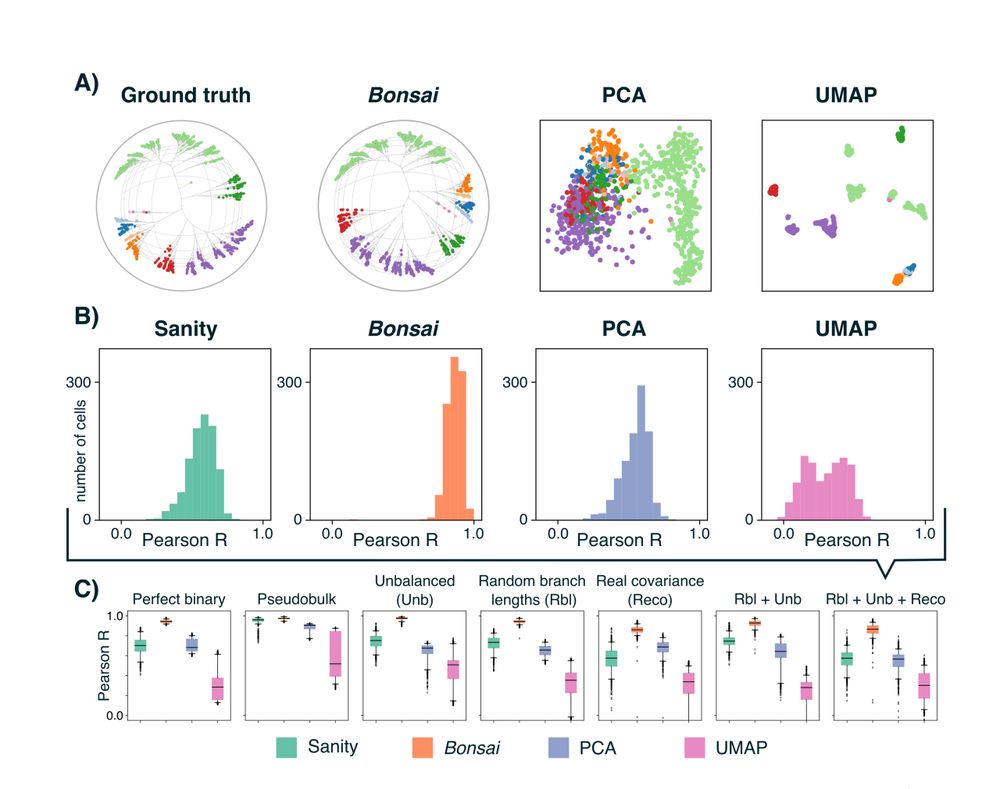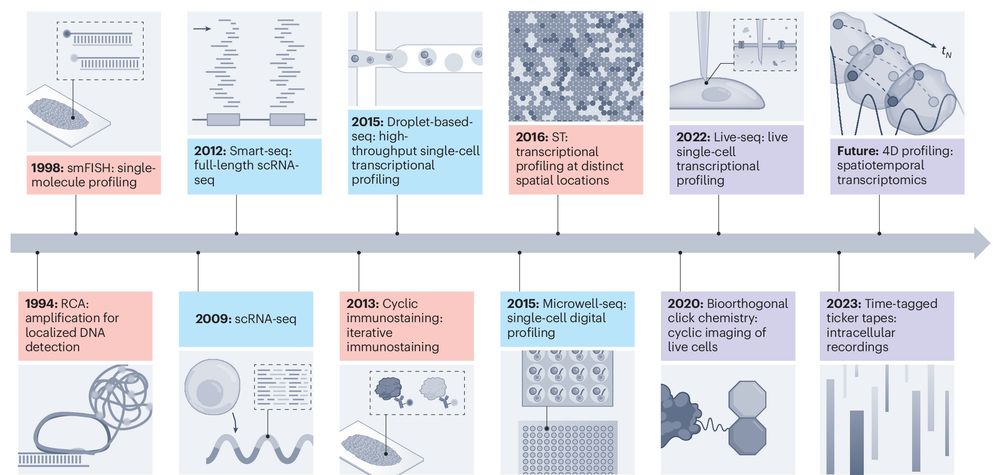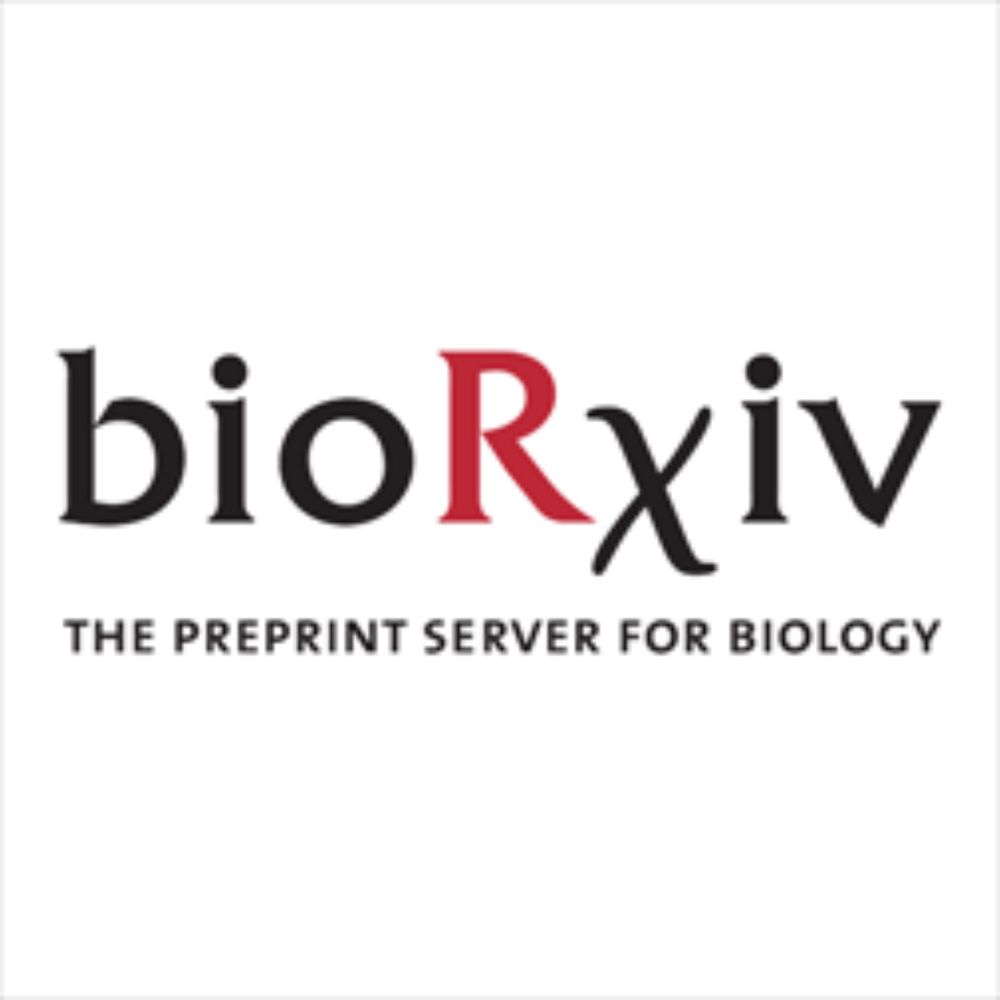Yes that’s exactly what I meant, I think it’s unique ;)
14.10.2025 15:34 — 👍 1 🔁 0 💬 1 📌 0
Entrance of this helix? Or should we meet at your poster?
14.10.2025 15:21 — 👍 0 🔁 0 💬 1 📌 0
Sounds good, how about tomorrows coffee break at 10:00?
14.10.2025 13:30 — 👍 1 🔁 0 💬 1 📌 0
Would love to hear and talk about muspan and its integration into existing single cell data formats. When are you presenting your poster?
14.10.2025 12:44 — 👍 2 🔁 0 💬 2 📌 0

Our benchmark + guidelines for atlas-level differential gene expression of single cells is online:
academic.oup.com/bib/article/...
Bottom line: Use pseudobulk + DESeq2 in simple and pseudobulk + DREAM in more complex settings.
Collab w/ @leonhafner.bsky.social @itisalist.bsky.social
13.08.2025 05:51 — 👍 15 🔁 6 💬 1 📌 0
Well this also depends on how we define the term hallucinations and the output an LLM is generating. I think it’s more terminology problem here. Which does not change the fact that a lot of people do not understand what an LLM is doing and how to proper interpret the outputs.
12.10.2025 16:47 — 👍 1 🔁 0 💬 0 📌 0
2 decades of self-injecting venom and hundreds of snake bites
18.09.2025 06:48 — 👍 0 🔁 0 💬 0 📌 0
Thanks Jim!
13.09.2025 19:03 — 👍 1 🔁 0 💬 0 📌 0
And last but not least thanks a lot to @denisschapiro.bsky.social who established the collaboration and mentored me.
13.09.2025 08:24 — 👍 1 🔁 0 💬 0 📌 0
I am happy to have worked with my collaborators from NTNU (Ingrid and Therese) on this amazing project, as well as @chiaraschiller.bsky.social who developed COZi (www.biorxiv.org/content/10.1...). shout out to CellCharter developer @marcovarrone.bsky.social for his amazing method(and collaboration)
13.09.2025 08:24 — 👍 1 🔁 0 💬 1 📌 0
The spatial analysis highlight is that we uncover this signal using 2 different spatial resolutions (cell and neighborhood level) and 2 independent methods (COZI and CellCharter). We hope that this will open up new research paths in Myeloma focusing on these cell interactions.
13.09.2025 08:24 — 👍 0 🔁 0 💬 1 📌 0
To our very surprise we find that increased “interaction” of PCs and a variety of immune cells, especially CD4+Tcells, is associated to increased risk of progression, which is contrary to many findings in other tumors where tumor immune interaction seem to generally be beneficial for patients.
13.09.2025 08:24 — 👍 1 🔁 0 💬 1 📌 0
Lastly we apply cell neighbor preference analysis with COZI (developed by @chiaraschiller.bsky.social ) and CellCharter’s neighborhood enrichment method and connect these findings to associated clinical metadata:
13.09.2025 08:24 — 👍 0 🔁 0 💬 1 📌 0
This questions the common belief that malignant PCs solely rely on glycolytic metabolism for cancer progression and niche establishment.
We further show that the aggregate size of the PC_OXPHOS neighborhood negatively correlates with immune infiltration
13.09.2025 08:24 — 👍 1 🔁 0 💬 1 📌 0
This led to the finding of 2 different malignant PC neighborhoods: 1) PC_OXPHOS characterized by huge vascularized aggregates of PCs with increased oxidative phosphorylation and 2)PC_MYELOID, where PCs show glycolytic metabolism and are loosely scattered around including myeloid cells.
13.09.2025 08:24 — 👍 0 🔁 0 💬 1 📌 0
As our antibody panel focused on functional markers, we used a novel neighborhood algorithm CellCharter ( @marcovarrone.bsky.social ) to structure the tissue into neighborhoods driven by not only cell types but also functional state.
13.09.2025 08:24 — 👍 1 🔁 0 💬 1 📌 0
We show that:
MM patients with bone disease (a frequent comorbidity) show an increased abundance of malignant Plasma Cells (PCs) in the vicinity of Osteoclasts and that PCs display a bone distance dependent expression of factors involved in bone degradation (IL32, HIF1A)
13.09.2025 08:24 — 👍 0 🔁 0 💬 1 📌 0
We apply IMC to biopsies from 65 MM patients, 6 SMM and 5 MGUS patients with an antibody panel focusing on immune, bone cells and metabolism. The dataset consists of roughly 1 million labeled cells including distance to the next bone surface for every image (soon on zenodo 10.5281/zenodo.17093203)
13.09.2025 08:24 — 👍 1 🔁 0 💬 1 📌 0
Thanks @marcovarrone.bsky.social it was a pleasure, learnt a lot from the way you built your codebase. We have a paper coming up with a lot of cellcharter in there! Amazing method :)
16.07.2025 18:56 — 👍 0 🔁 0 💬 0 📌 0
And for anyone who has considered contributing to an open source package: don't be scared to propose changes.
Even if it's not a complete and perfect solution, whoever is maintaining the package will help you in get to the right solution and they will be incredibly grateful.
15.07.2025 13:31 — 👍 0 🔁 1 💬 0 📌 0
For people like me who don't have a team behind a package like CellCharter, contributions like these mean a lot. So thank you Lukas :)
And congratulations, it's not always easy to jump into an existing codebase and propose changes.
15.07.2025 13:31 — 👍 1 🔁 1 💬 1 📌 0

RCS measures how large a cell niche (aka spatial domain aka spatial cluster) is compared to what would be normally expected.
This pushed me to completely rewrite the system for generating and plotting boundaries for cell niches.
The new system is now more efficient, consistent, and visually clear.
15.07.2025 13:31 — 👍 1 🔁 1 💬 1 📌 0

Spotted: @loggas.bsky.social and @arojhada.bsky.social teaching phenotyping to our Advanced Systems Biology students
04.07.2025 19:23 — 👍 7 🔁 1 💬 0 📌 0

An alternative to tSNE & UMAP for more accurate data visualization:
Tree representations for distortion-free visualization and exploratory analysis of single-cell omics data.
The trees are constructed to accurately represent true distances between the objects in the high-dimensional space.
09.05.2025 11:07 — 👍 66 🔁 14 💬 3 📌 1
Postdoc in Computational Biology at @CirielloLab @dbc_unil.
Machine Learning for spatial omics.
https://batcheffect.com
Leibniz Institute: Hans Knöll Institute
Jena
The research group Applied Systems Biology is concerned with the mathematical modeling and computer simulation of infection processes caused by human-pathogenic fungi.
Anna Kreshuk's lab and the team behind ilastik write here about their latest research in machine learning for microscopy. Also, new ilastik features and releases get announced here! @EMBL
Our group does exciting research at the intersection of computer science and biomedical research at VIB 🔍💻. Our goal is to build trustworthy models of cells and tissues.
https://saeyslab.sites.vib.be/en
Studying genomics, machine learning, and fruit. My code is like our genomes -- most of it is junk.
Assistant Professor UMass Chan, Board of Directors NumFOCUS
Previously IMP Vienna, Stanford Genetics, UW CSE.
@uniheidelberg.bsky.social Postdoc Network
https://heidelbergunipostd.wixsite.com/heidelberg-postdoc
PhD candidate in @saezlab.bsky.social at the Institute for Computational Biomedicine, Heidelberg, Germany
Immunologist at the Ido Amit, Nir Yosef and Robert Zeiser labs. Formerly PhD Student in Burkhard Bechers lab. Interested in innovative single cell technologies and computational biology.
Open-source x Science - Dev Advocate @ Seqera
Bioimaging enthusiast
Bioinfomagician/PhD in Bioinformatics, developing @nextflow.io @nf-co.re pipelines
Posts and RPs in English/French - He/him
Software engineer at CZI, https://scverse.org steering council, check out my https://github.com/ivirshup
Associate Professor of Data Science & asst. Dean of Research at UVA School of Data Science, #Rstats enthusiast, dad, runner, guitar noise-maker. Views my own.
Web: https://stephenturner.us/
Newsletter: https://blog.stephenturner.us
Applied statistician. I tweet data-driven observations, data science educational materials, academic research updates, and the occasional joke.
Our group develops and applies computational approaches to study molecular variations and their phenotypic consequence. We are part of DKFZ and EMBL.
Website: https://steglelab.org/
PhD student at @saezlab.bsky.social and @jackstadt-lab.bsky.social. Working on colorectal cancer using single cell and spatial omics.
VP for Research, T.H. Smoot Professor
Depts Chemical and Biomolecular Engn, Pathology, Oncology, INBT
Johns Hopkins University
3D multi-omic, CAR T therapy, cell migration and mechanics
Lab: https://wirtzlab.johnshopkins.edu
Mats Nilsson's team at Stockholm University and Scilifelab, researching molecular diagnostics and in-situ spatial transcriptomics









